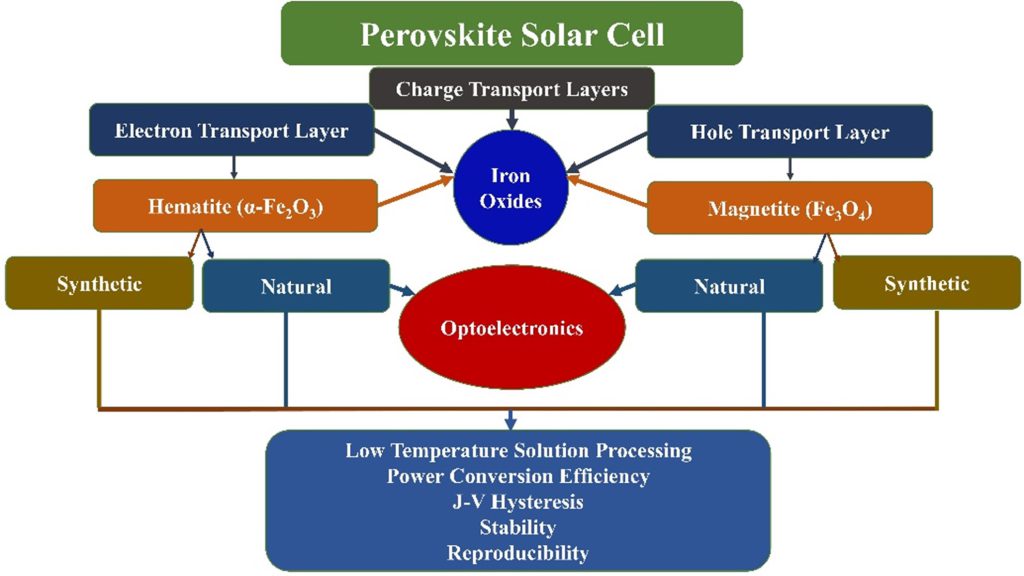Pakistan is rich with a wealth of diverse mineral resources, including reserves of metals like copper, iron and gold and non-metallic reserves like marble and gypsum. These are essential resources for various industrial and technological advancements in the twenty-first century. According to recent estimates by geological survey of Pakistan a total value of over $6 trillion is locked away underground. These remarkably abundant resources possess the strong potential to boost Pakistan’s economy significantly. Strategic developments in this sector can lead Pakistan to create new job opportunities, increase exports, and address energy challenges. However, certain challenges need to be addressed, such as limited infrastructure and technological advancements, to get maximum benefit from this enormous potential.

Metal oxide based natural ores are minerals that contain metal atoms and oxygen atoms in their crystal structure. The exceptional opto-electrical characteristics of metal oxide nanostructures relative to their bulk counterparts have gained substantial attention in various applications of energy conversion/storage devices such as solar cells, supercapacitors, LEDs, Li-ion batteries, electrochemical sensors as well as hydrogen production.
Several metal oxides, like lithium cobalt oxide (LiCoO2) and lithium iron phosphate (LiFePO4), are being used as active cathode materials in lithium-ion batteries. These oxides bid high energy density (extent of energy stored per unit mass) and good cyclic stability (capability to endure repeated charging and discharging cycles). Sodium-ion batteries utilizing sodium metal oxide-based derivatives are emerging alternatives to lithium-ion batteries due to the scarcity of lithium. Pakistan hosts the world’s second-largest salt mines and thus has an abundant and low-cost reserve of sodium, which can be a valuable element in the future. Metal oxides like ruthenium oxide (RuO2) and manganese oxide (MnO2) are also being used as electrode materials in supercapacitor applications due to their high surface area and fast charge/discharge rates, making them suitable to store and release energy rapidly. Yttrium-stabilized zirconia (YSZ), a metal oxide compound, is one of the commonly used electrolytes in solid oxide fuel cells. Some metal oxides, such as titanium dioxide (TiO2) and iron oxide (Fe2O3), act as photoanodes in Photoelectrochemical cells. These devices absorb sunlight and generate electricity through a series of chemical reactions. Hematite (Fe2O3) and perovskites are also being utilized as photocatalysts in the water-splitting processes for the production of hydrogen and oxygen from water molecules, a clean fuel technology.
As discussed above, Iron oxide-based nanostructures have proven to be potential candidates for advanced energy applications owing to their outstanding thermal stability, high surface area, chemical stability, non-toxicity, and superior opto-magneto-electrical properties. Iron oxides are naturally occurring mineral compounds existing in three well-known polymorphic forms, including hematite (α-Fe2O3), maghemite (γ-Fe2O3), and magnetite (Fe3O4). Pakistan has significant potential for iron ore exploration and its beneficiation. There are about 1.4 billion tonnes of reserves spread across various regions of Pakistan as per estimates. Kalabagh Iron Ore Resource Project, which is situated in Punjab, possesses the largest identified iron ore deposit, with an estimated 298 million tonnes of reserves. Dammer Nissar Region which is located in Khyber Pakhtunkhwa, holds 48.6% rich iron oxide contents with total estimates of around 6.5 million tonnes of reserves. Further explorations are underway in other regions such as Chiniot on Punjab and Nokundi in Balochistan and can lead to further discoveries. Beneficiation of these iron ores via simple processing methods like gravity and magnetic separation can make it desirable not only for steel production but for advanced energy applications such as solar energy conversion, electrochemical storage and hydrogen production etc.

We have explored natural ore based nanosized iron oxides for energy conversion applications where they have demonstrated excellent performance and have proved their potential for these applications. The synthesis of hematite and magnetite nanoparticles from naturally occurring high-purity micron-size ore powders by using a top-down approach involving ball milling of powder followed by ultrasonication is reported in the journal ‘Nanomaterials’. Ref: https://doi.org/10.3390/nano12101635.

Furthermore, the potential of these iron oxides as charge transport materials is explored in our recent work, we reported the application of low-cost natural hematite (α-Fe2O3) as an efficient electron transport layer(ETL) in perovskite solar cells employing a triple cation absorber layer in collaboration with Prof Lukas Schmidt-Mende from Konstanz University Germany. To show the compatibility with low-temperature processing, the entire solar cell fabrication process was carried out below 150 °C. The optimal concentration-based solar cells exhibited power conversion efficiency of 13.3 % and open circuit voltage of 1.03 V (Fig. 4). The reported low-cost natural hematite-based ETL offers a facile and economical approach for the improvement of triple-cation perovskite solar cells. (Reference: https://doi.org/10.1016/j.surfin.2023.103003)

Similarly the magnetite Fe3O4 being an intrinsic p-type material is studied as hole transport material for the perovskite solar cells in another study: DOI: 10.1039/D3YA00014A, Energy Adv., 2023, 2, 1905-1914.
The hole transport layer (HTL) critically affects the solar cell performance and stability of perovskite solar cells (PSCs). Among HTLs, spiro-OMeTAD has been proved to be the most successful candidate. However, the stability of the absorber layer remains an issue with most of the conventionally used HTLs. The incorporation of Fe3O4 into the spiro-OMeTAD making a bilayer HTL has not only shown a superior solar cell performance than spiro-OMeTAD alone but has also displayed an enhanced shelf-life stability. It works by reducing the surface roughness, which in turn leads to the formation of a smooth and pin-hole free HTL. The bilayer HTL design improves charge transport and also reduces the interfacial recombination as studied from steady-state and time-resolved photoluminescence and space charge limited current measurements, respectively. The Fe3O4/spiro-OMeTAD bi-layer HTL demonstrated significant enhancement in solar cell or photovoltaic performance, such as 11% higher power conversion efficiency (PCE) than the reference device, and also exhibited long-term shelf-life stability by retaining 89% of its initial PCE after around 1300 hours. Our study proposes a simplistic strategy for the fabrication of efficient and stable PSCs by employing the inorganic–organic stack architecture of HTLs.

In summary, Pakistan’s metal oxide-based mineral reserves hold enormous potential not only for economic development, but also for addressing challenges of energy demands.
The author is an Associate Professor at Department of Material Engineering, School of Chemical and Materials Engineering, National University of Sciences and Technology (NUST). She can be reached at sofiajaved@scme.nust.edu.pk.
Research Profile: https://bit.ly/4crhoa3

![]()





